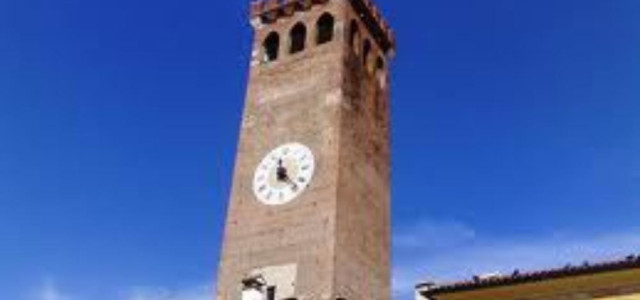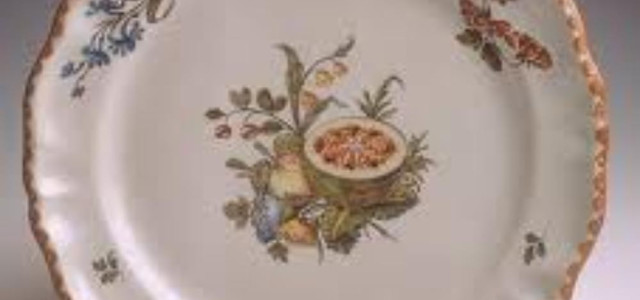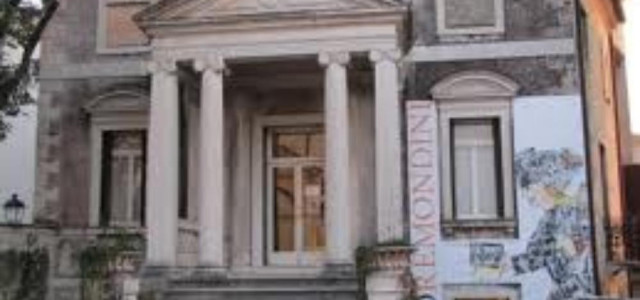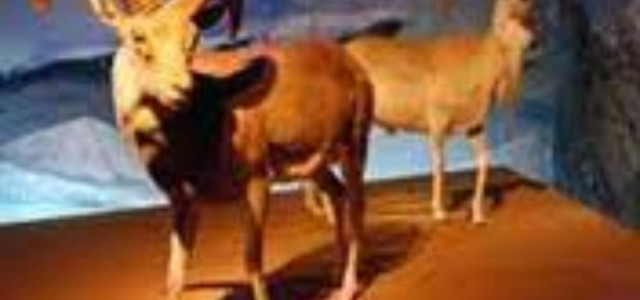Bassano del Grappa
Bassano del Grappa (Venetian: Basan /baˈsaŋ/ (plain form) or Bassan/Bassàn (italianized form)) is a city and comune , in the Vicenza province, in the region Veneto, in northern Italy. It bounds the communes of Cassola, Marostica, Solagna, Pove del Grappa, Romano d'Ezzelino, Campolongo sul Brenta, Conco, Rosà, Cartigliano and Nove. Some neighbourhoods of these communes have become in practice a part of the urban area of Bassano, so that the population of the whole urban area is higher than the population of Bassano proper. The artist Jacopo Bassano was born, worked, and died in Bassano and took it as his surname. Bassano Del Grappa is also famous for inventing the spirit Grappa, traditionally an after-dinner drink made from pomace (discarded grape seeds, stalks, and stems). History The city was founded in the 2nd century BC by a Roman called Bassianus, whence the name, as an agricultural estate. However, an ancient bronze sword (called "spada di Riccardo"), found in 2009 and dating back to the 7th century BC, possibly between the 18th and 15th century BC, suggests that the area of Bassano was already inhabited not just in the pre-Roman period, but possibly even in the pre-Venetic period. The first news of the existence of the medieval city dates from 998, while the Castle is mentioned first in 1150. In 1175 Bassano was conquered by Vicenza, but the city maintained a semi-autonomous status as a free commune in the 13th century also, when it was under the family of the Ezzelinos. In 1368 it was acquired by the Visconti of Milan and, in 1404, by the Republic of Venice: the latter did not alter the citadine magistratures, limiting to impose a Captain chosen by the Venetian Senate. The city became home to a flourishing industry producing wool, silk, iron and copper, and mainly for ceramics; in the 18th became especially famous in all Europe for the presence of the Remondini printers. During the French Revolutionary Wars the city was the site of the Battle of Bassano. In 1815 it was included in the Kingdom of Lombardy-Venetia, and became part of the unified Kingdom of Italy in 1866. Napoleon Bonaparte remained in Bassano del Grappa for many months. The original name of the town was Bassano Veneto. After the terrible battles on Mount Grappa in WWI, where thousands of soldiers lost their lives, a decision was made to change the name of the town. In 1928, the name was changed to Bassano del Grappa, meaning Bassano of Mount Grappa, as a memorial to the soldiers killed. Ernest Hemingway during his days as an ambulance driver in the war spent many days in Bassano and eventually settled there as part of A Farewell to Arms. Also other American writers spent some days in Bassano during WWI such as Scott Fitzgerald and Dos Passos. During World War I Bassano was in the front area, and all industrial activities were halted. In World War II, after the Armistice with Italy, the city was invaded by German troops, who killed or deported numerous inhabitants. The symbol of the town is the covered wooden pontoon bridge, which was designed by the architect Andrea Palladio in 1569. The bridge was destroyed many times, the last time during WWII. The Alpine soldiers, or Alpini have always revered the wooden bridge and Bassano del Grappa. After the destruction of the bridge, they took up a private collection and had the bridge completely rebuilt. Often soldiers flock to the bridge to remember and sing songs from their days as alpine soldiers. The grappa shop of Nardini Distillery is located on the bridge, known as Ponte degli Alpini. Bassano del Grappa is also the hometown of Renzo Rosso, the founder and President of Diesel. Since Diesel began to expand in the mid-1980s, the company has become an important source of business for the city and its surrounding region. As thanks for the support that Rosso has received locally, he has invested personally in the city's professional soccer team, Bassano Virtus 55 S.T., initiated various reconstructions by the town centre, and recently launched a large wi-fi hotspot that provides free internet to the city's inhabitants. Geography Bassano is located at 129 metres (423 feet) above sea level and has an area of 46.79 square kilometres (18.07 square miles). Its highest point is at 1,276 m (4,186 ft), whereas the lowest point is at 84 m (276 ft). The city lies at the foothills of the Venetian Prealps, where river Brenta comes out the southern end of Canal di Brenta (also called Valbrenta 'Brenta valley') and flows in the lowlands at the borders of Vicenza, Treviso and Padua provinces. Main sights The Cathedral (Duomo), built around the year 1000 but renovated in 1417. It has works by Leandro da Bassano, Ottavio Marinali and others The Castello Superiore (Upper Castle) The church of St. John the Baptist, built in the 14th century and restored in the 18th century. The church of St. Francis, with a Crucifix by Guariento (14th century) and remains of contemporary frescoes. Next to the church is the Town Museum, with ancient archaeological remains, works by Antonio Canova and the Tiepolos, and drawings by Gian Lorenzo Bernini, Spagnoletto, Albrecht Dürer and Rembrandt The wooden covered Bridge, or Ponte degli Alpini, on the Brenta River, designed in 1569 by the architect Andrea Palladio to replace a pre-existing construction existing at least from 1209. The bridge was destroyed in 1748, and was rebuilt three years later. The Nardini tavern on the bridge, unchanged since 1779. Palazzo Michieli-Bonato', with a façade frescoed by Jacopo da Bassano. The Palazzo del Municipio (Town Hall), erected from 1404. It has a noteworthy loggia and a fresco attributed to Jacopo da Bassano. The Monte di Pietà, a Renaissance edifice with 15th century coats of arms. The Palazzo Sturm, home to the Ceramics Museum In the neighbourhood are the Villa Rezzonico, designed by Baldassarre Longhena, and the 17th century Villa Bianchi-Michiel, with a garden decorated by statues. Administrative subdivisions The municipal statute (art.6, par.2) of Bassano, recognizes only Rubbio as frazione and defines Campese, Marchesane, San Michele, Sant'Eusebio and Valrovina as contrade. The other existing neighbourhoods of Bassano are not mentioned in the statute. However, in practice, all the administrative subdivisions have the same prerogatives and are named quartieri. Frazioni Rubbio is a frazione and quartiere located at an altitude of 1057 m on the Asiago plateau. This hamlet is contiguous with another hamlet, also named Rubbio, which is part of the commune of Conco. Thus, in practice, the two hamlets form one village (named Rubbio), even though they belong to two different communes from the administrative point of view. Contrade Officially, the contrade (in ven. contrae) are Campese, Marchesane, San Michele, Sant'Eusebio and Valrovina. From an administrative point of view these are also quartieri. However, in practice, some of these neighbourhoods themselves contain smaller inhabited areas (as streets, groups of houses) also called contrade: there are thus contrade within contrade. Besides, some places known as contrade exist also within other neighbourhoods which are officially simply defined as quartieri, but not contrade. Quartieri All the administrative subdivision (quartieri) of Bassano are: Centro Storico, Margnan-Conca d'oro, San Marco, San Vito, Ca'Baroncello, Quartiere Firenze, Nuovo Ospedale, San Lazzaro, San Fortunato, Borgo Zucco, Marchesane, Rondò Brenta, Angarano, Quartiere XXV Aprile, Sant'Eusebio, San Michele, Valrovina, Rubbio, Campese, Merlo, Quartiere Pré, Santa Croce. Rubbio, with an area of 6.835 km2, is the largest quartiere of Bassano, but also the least populated (86 inhabitants in 2009). Quartiere Prè (an old venetian plural meaning meadows, the modern ven. plural is prai), located in the southern lowland of Bassano, is the second least populated quartiere (299 inhabitants in 2009). Part of it hosts an industrial zone that also falls in the nearby San Lazzaro, but it also contains a considerable rural area which falls within the Parco rurale sovracomunale Civiltà delle Rogge regional park. San Vito, in the north-eastern part of Bassano, is the most inhabited quartiere (5841 inhabitants in year 2009). It merges with the built-up areas of the bordering comunes Romano d'Ezzelino, San Giuseppe di Cassola and Pove del Grappa. Territorial variations Until 1928, the official name of Bassano del Grappa was simply Bassano (as it is still informally called today). In 1878, the neighbourhood of Campese, previously belonging to the commune of Campolongo sul Brenta is detached from Campolongo and aggregated to Bassano. In 1938, the commune of Valrovina, which also comprised Rubbio, is suppressed and aggregated to Bassano. Notable people Tommaso Gabrielli, Motorcycle racer Luigi Agnolin, football referee Jacopo Bassano, painter Stefan Essai, important noble Giovanni Battista Brocchi, geologist Miki Biasion, World Rally Champion Tito Gobbi, opera singer Jeronimo Bassano, Master of Trumpets and Shawms to the Doge in Venice Stefano Rusconi, professional basketball player, who played also in NBA Renzo Rosso, Founder and President of Diesel and the Only The Brave Group Giovanni Volpato, engraver Francesco Fontana, Italian hockeyst Francesco Dazzi, Professor and Doctor Simone Cogo (Sir Bob Cornelius Rifo), Musician and founder of The Bloody Beetroots Corrado Modenese International relations Twin towns – Sister cities Bassano del Grappa is twinned with: Šibenik, Croatia Main Industries in the Bassano del Grappa area Diesel (brand) Baxi Manfrotto SAMET VIMAR ABB MEVIS SPA References External links Official website Personal webpages about the network of tributaries and ditches connected to Brenta in Bassano






